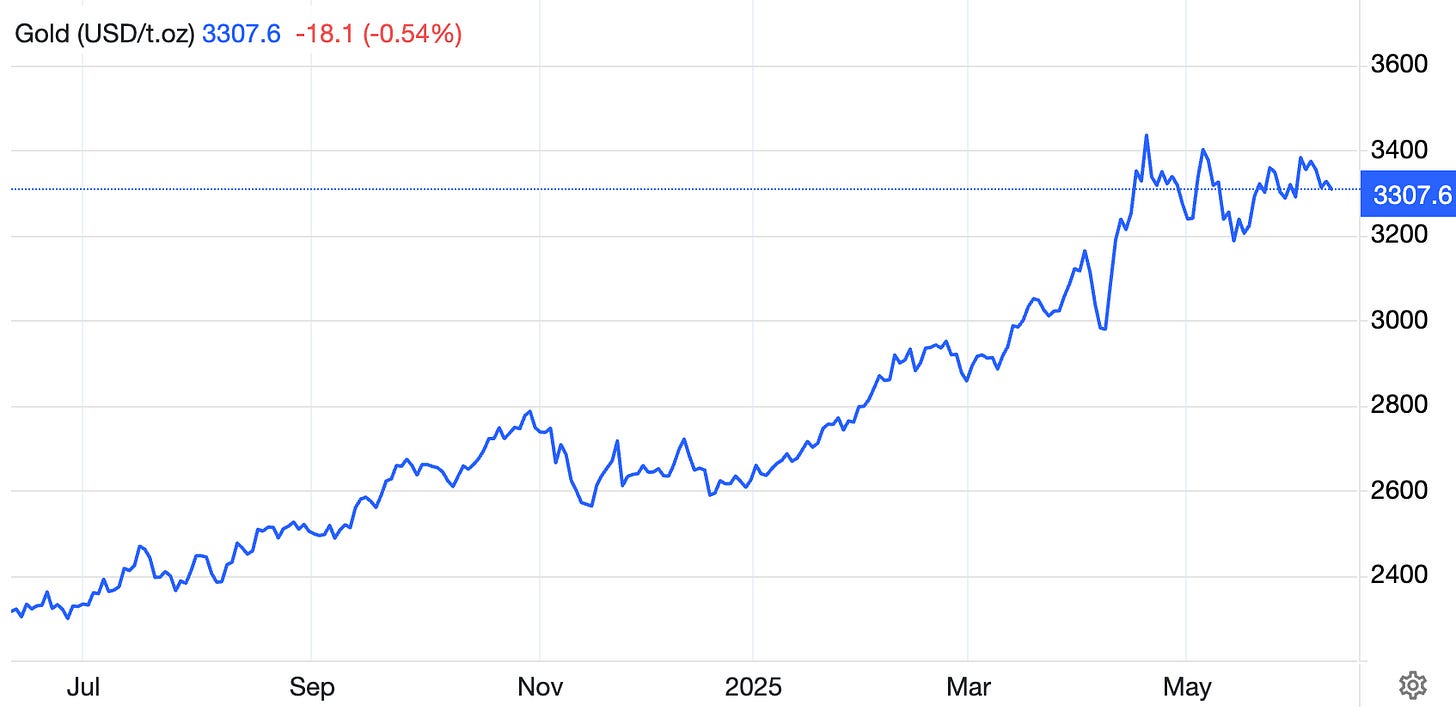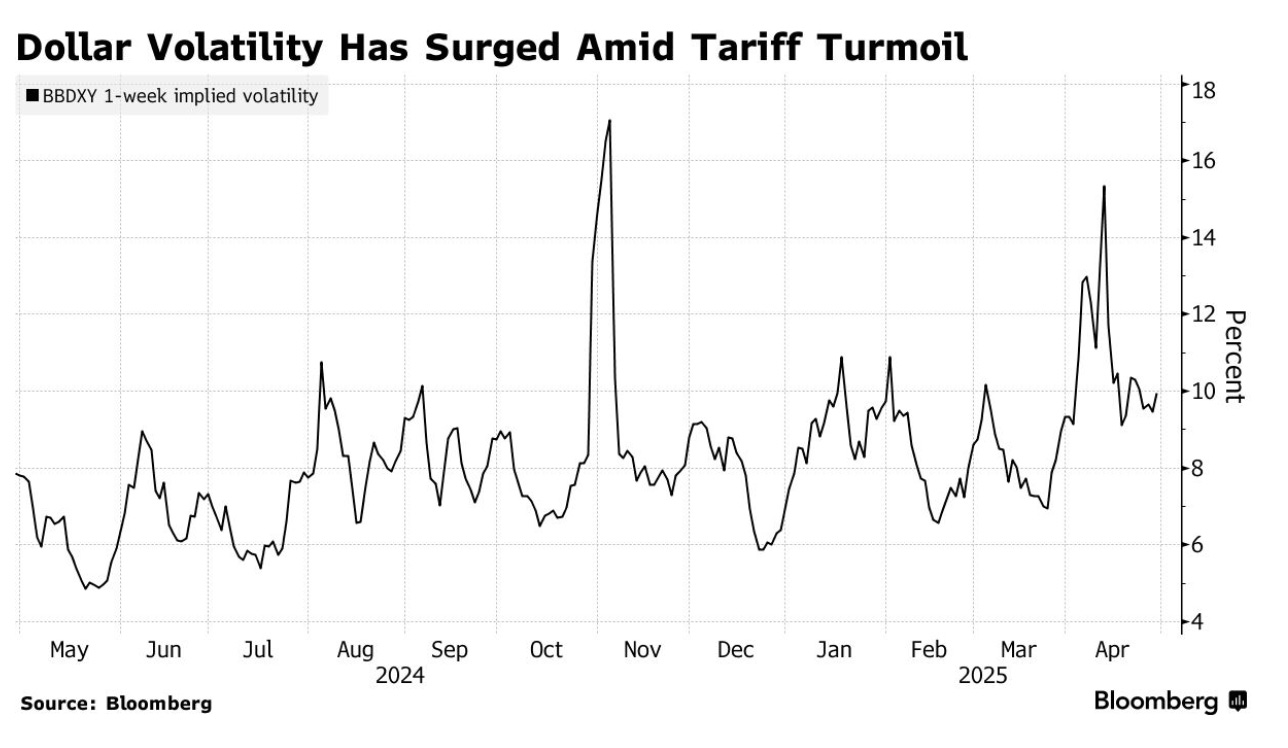Here’s Why This Pause Is A Buying Signal For Gold
Gold is still trading below its April highs. But the drivers behind its rise – tight supply, steady central bank buying, persistent inflation, geopolitical uncertainty – remain in place.
That’s why this holding pattern is an opportunity to accumulate gold and not a reason to wait.
Gold Consolidates in June After April Peak
Gold ended last week just above $3,330 and opened much the same this week, having eased down gradually from its April peak above $3,500. Since mid-April, prices have mostly settled between $3,300 and $3,450, reflecting a steady consolidation as we move deeper into June and the Federal Reserve’s upcoming FOMC meeting.
This price action is a pause within a larger, intact trend.
That’s because the forces driving gold’s rally haven’t changed.
Central banks have continued buying gold aggressively. In fact, the People’s Bank of China increased its gold reserves for the seventh consecutive month as of the end of May 2025, raising holdings to 73.83 million fine troy ounces from 73.77 million the month before. That steady accumulation reflects a deliberate, ongoing debt and dollar diversification strategy.
Poland has also emerged as another major player in this global trend. Since the start of 2025, the National Bank of Poland has added 61 tonnes of gold to its reserves, including a 12-tonne purchase in April alone, bringing total holdings to 509.3 tonnes.
That figure now exceeds the European Central Bank’s (ECB) centrally held reserves, a strong signal of how aggressively some national banks facing geo-political risks are moving to secure gold.
The National Bank of Poland’s Governor, Adam Glapiński has emphasized that gold serves as a shield against global instability and a cornerstone of economic sovereignty. Poland is now focused on building financial and military protection. As the Ukraine-Russia conflict rages next door, gold is a hard asset the country can count on to protect its economic sovereignty` and stability.
Other countries in the region and beyond are taking similar steps. Azerbaijan and Iran are making moves to increase their gold holdings quietly. They’re doing this to reduce dependence on the U.S. dollar, which has become less reliable as a safe haven amid global tensions and shifting alliances, while also serving as an attempted stability hedge.
While my analysis shows that a Fed rate cut is unlikely at the upcoming June FOMC meeting, we agree with President Trump that the cost of servicing U.S. debt is too high.
As we’ve reported for readers at Prinsights, we expect Powell to consider that, in addition to slowing economic indicators (9 of 12 Federal Reserve district banks cited slow or no growth in May) and move to cut rates as early as July.
Of course, more economic and financial data can surface between now and then – but that move will be another factor that boosts the value of gold as lower rates make U.S. Treasuries less attractive.
A Fundamental Restructuring of Global Reserve Management
These moves are part of an ongoing and broad international shift to reduce reliance on the U.S. dollar. Central banks and sovereigns are altering how they manage reserves, placing physical gold at the core of their portfolios as a real, reliable asset that preserves purchasing power and offers protection against currency volatility, financial sanctions, and geopolitical risks.
This transition is accelerating amid growing global tensions, economic uncertainty, and increasing doubts about the dollar’s long-term stability and record U.S. debt and deficits.
Supply Constraints Build as Demand Remains Robust
In May, global gold-backed ETFs saw net outflows of $1.8 billion, breaking a five-month streak of inflows. North America and Asia led the decline; however Europe saw modest inflows.
And despite the dip, year-to-date flows remain positive, with cumulative inflows of $30 billion and global holdings increasing by over 322 tonnes.
Meanwhile, supply constraints continue to build. The average all-in sustaining cost (AISC) for gold production globally reached approximately $1,399 per ounce by the end of 2024, up from previous years. That figure sets an important floor for miners.
Miners need prices to remain above that level to stay profitable and invest in exploration or new projects. But despite prices comfortably around $3,300, exploration budgets fell by 7% in 2024 to $5.55 billion globally, having dropped by 3% in 2023. That suggests miners are cautious about expanding supply, due to regulatory hurdles, geopolitical uncertainty, and rising capital costs.
This creates a growing tension: demand remains robust—especially from central banks and long-term holders – but supply growth is constrained. According to the World Gold Council, there were approximately 1,200 tonnes of gold across jewelry, investment, industrial use, and central bank purchases in the first quarter of 2025. That boom was the highest quarterly gold demand since 2016.
Central banks accounted for about 200 to 250 tonnes of this quarterly demand, continuing a multi-year trend of accumulation. Meanwhile, global mine production combined with recycled gold supply totaled roughly 1,100 tonnes during the same period.
This creates a clear structural deficit of around 100 tonnes per quarter, tightening the physical market and putting upward pressure on prices. Buyers – including major central banks and long-term investors – are now competing for a shrinking pool of available gold.
This supply-demand imbalance, or distortion, is a key driver of gold’s price resilience despite periods of price consolidation.
Why Buy Gold Now?
Gold remains attractive because the fundamentals haven’t changed. Supply is still tight. Central banks are still buying. Inflation is still above target. But gold is only trading $150 below its April high. That disconnect is the opportunity.
More By This Author:
The Queen’s Gambit, China-Style: Rare Earths And The Real Power PlayWhat Gold Sees In The 10-Year
Gold Held The Line: A Sign Of Underlying Strength
Disclosure: None.






